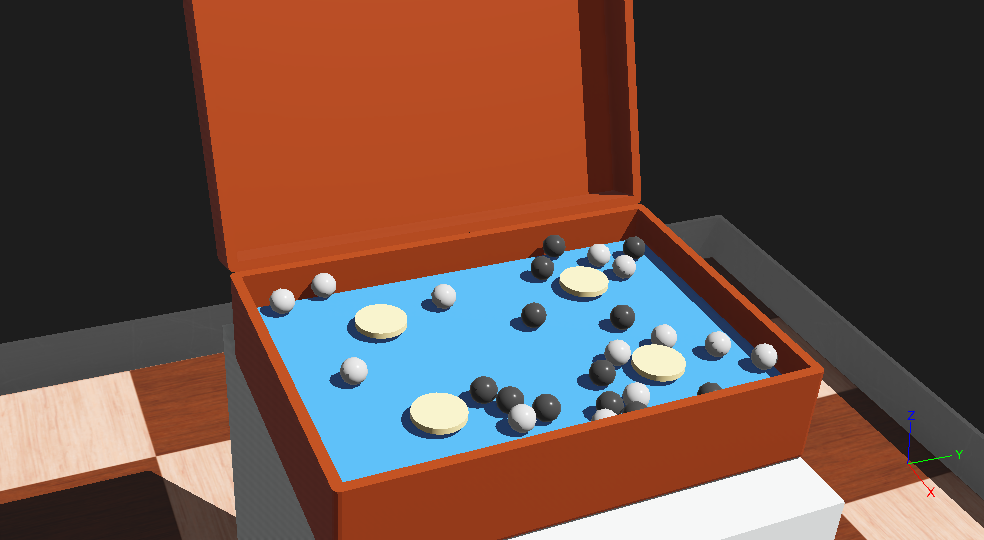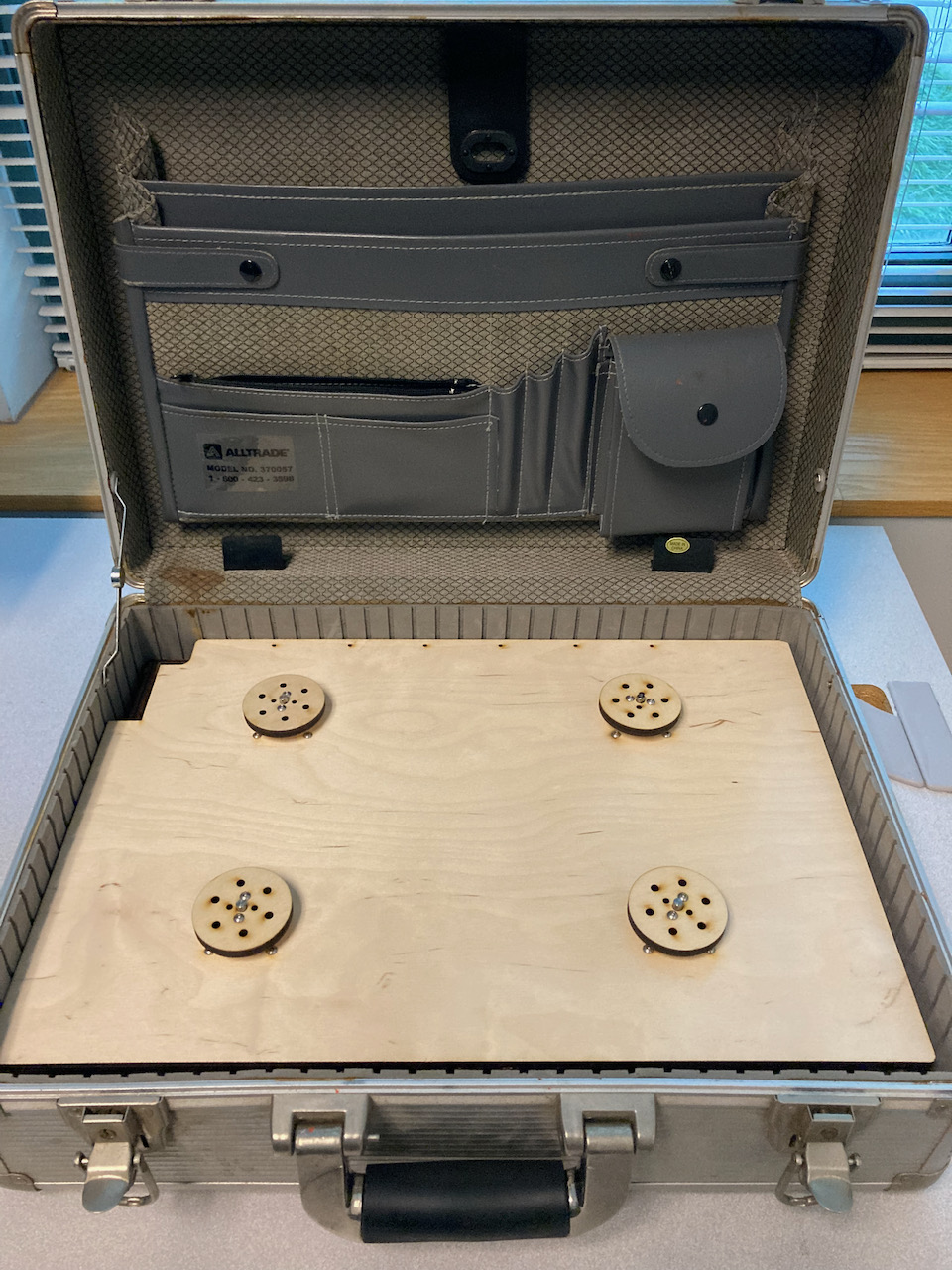Exercise: Suitcase Test¶
For this exercise, students will work in pairs to simulate, build, and test a simple performance which takes place within a suitcase. The first part includes developing the concept and testing in simulation. The second includes fabricating any needed elements and testing on the physical suitcase testbed. This shared platform provides four stepper motors mounted within an aluminum equipment case.
The chief objective is to identify creative inquiries which could be addressed within the formal constraint of a portable robotic sculpture notionally contained with a suitcase. As starting points, you might consider some of the possible goals:
using dynamic interaction with moving objects to convey a sense of purpose
embracing randomness and chance movement as an expression of meaning
utilizing rhythmic or patterned movement to convey tempo and mood
creating expressive movements with a sense of individual identity
stimulating human empathy using movement
portraying a locus of attention via gesture and pose
illustrating a process of turn-taking
implying a dialogue or expressing a relationship
The chosen objectives will need to consider the exploration within the limitations of physical hardware, including limited motion, precision, and speed, not to mention size and scale.
There are a variety of technical approaches; here are some starting points to contemplate:
setting up a manipulation area in which impellers interact with props
create a mechanism with additional freedoms, possibly counterweighted, to extend the basic movement dynamics
create counterbalance in which one mechanism pulls or pushes on another
use mirrors or gobos to create a visual representation in light and shadow which extends the movement
Contents
Objectives¶
After this exercise, you should be able to:
Formulate a creative inquiry as a robotic performance concept.
Resolve a performance concept into a kinetic sculpture system within formal constraints.
Model a simplified physical system as a simulation.
Fabricate and test kinetic sculpture.
Rehearse live performance and improvisation of the motions.
Part 1: Simulation¶

A prototype simulation model of the physical testbed is included in the reference project Webots.zip described under Webots Robot Simulator Examples. The sample model is documented in Suitcase Robot Model.
Depending on your overall creative goals, a significant challenge may be choosing an appropriately simplified model to test in simulation. E.g., using mirrors or fabric may be straightforward to integrate into a physical sculpture but difficult to model within Webots. For these cases, the simulator may primarily be a means for prototyping choreography in advance instead of a full-blown previsualization.
There are several directions you may consider for motion programming: crafted animation, improvised performance using motion primitives, generative systems, or simulated physics. Given that the physical testbed lacks sensors, any generative solution will either depend on physical dynamics or numerical generation. However, the simulator itself can be treated as a generative system: it is possible to use simulated sensor-driven interactions to produce trajectories which drive a physical system.
For improvised performance, we will have access to MIDI control devices. Sample code is available from previous course iterations, this will be updated soon.
Part 1: Deliverables¶
Each pair should post a brief report as a post on the RCP project site with the following:
A paragraph briefly describing your performance objectives and outcomes.
Short video clip (under one minute) of simulated behavior. The course site can directly host MP4 videos up to 16 MB. Larger files should be hosted using a streaming service.
Zip file of your Webots project. For uploaded files, please add your preferred names as a prefix on the filename to help me keep them straight.
Part 2: Testbed Prototype¶

For the second phase of the assignment, each pair will test and document a performance on the physical testbed. This may include any or all of the following:
Fabricating manipulators or mechanical systems to attach to one or more motors temporarily.
Constructing scenery or a ground surface to install inside the case temporarily.
Fabricating or finding props to manipulate.
Porting the Webots simulator controller to control the Arduino in the testbed.
Please take good care not to damage or modify the equipment case, it is my own property and has some history.
Please keep in mind this is intended to be an exploratory exercise, not a polished show. Please focus on a single idea which will elucidate some potential for suitcase performance, then keep the fabrication to the minimum needed.
Resources
Testbed physical design: Suitcase Testbed
Stepper motor drive system: CNC Arduino Shield.
Arduino firmware: StepperWinch Arduino Sketch.
Python scripting examples: Suitcase Control Samples (Python).
Part 2: Deliverables¶
Each pair should post a brief report as a post on the RCP project site with the following:
A paragraph briefly describing your performance objectives and outcomes.
Photos of any fabricated hardware.
Short video clip (under one minute) of live performance.
Zip file including any CAD or design files and the final performance code.